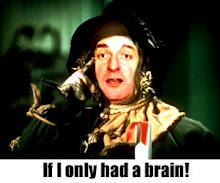I Vampiri
'I Vampiri' (The Vampires) is a 50s Italian horror movie set in Paris. Young women are turning up drained of blood, but with no visible injuries. Is there a vampire at work? Or something even more sinister. A young journalist tries to find out and in the process save his pretty girlfriend.
Riccardo Freda's 'I Vampiri' is one of those influential 50s horror movies that pops up in film histories a lot (like 'Eyes Without a Face' or 'The Quatermass Experiment'). It paradoxically mixes themes of futuristic medical science going bad and ancient regimes feeding off the present in a story that owes much to the tale of Erzebet Bathory (see this inuit panda scarlet carwash: Film: "Countess Dracula" for more on her). It helps too that legendary horror maestro Mario Bava was cinematographer.
Freda's movie anticipates much that made Hammer films seem fresh and so presses many of the critics buttons. It's probably no accident that in an Italian film, the villain is a Duchess (kind of like Il Duce), but the villains of the piece (and though there is only one 'real' vampire, note the plural in the title) are a class, not simply people. They represent an aristocracy that still survives and wields power over a poorer population, feeding on that society's young, not just to survive, but to stay powerful.
In the end though 'I Vampiri' owes as much to the mad scientist movies of the thirties and forties as it does to any forward-looking vision. Although a vibrant Paris features throughout the movie, these aristocrats still live in a castle that would not be out of place in a Universal vision of Transylvannia. The medical theories of the Professor, who restores the Duchess's youth with blood transfusions, are laughably naive (at one point the Duchess develops 'left-handedness' from the blood of one of her victims).
It's silly stuff, but undeniably good-looking. The sets are wonderfully gothic and somehow Bava lends a dreamy quality to it all that lifts it out of the ordinary (you see that look in later Bava work such as 'The Mask of Satan' or 'Lisa and the Devil'). Old though this is (1956), the transformation of the villain from old to young woman and back again is excellently achieved (though it is a simple lighting trick used originally in Mamoulian's 'Dr Jeckyl and Mr Hyde', 25 years earlier). All pluses, and ones that help us forget the melodramatics of the story. Still I was expecting something of the calibre of 'Eyes without a Face' and this is not it.


2 Comments:
Hey Niall,
great review. i've yet to see this Freda film, though it sounds quite similar to L'orribile segreto del Dr. Hichcock, a lurid film about necrophilia.
You a fan of Mario Bava too?
best wishes,
James
Thanks, James. I have heard of 'The Horrible Secret of Dr. Hichcock' (by Freda too), but haven't had a chance to see that yet. As to Bava, he has a very distinctive style that I do appreciate, but till now my exposure hasn't been great (just the usual 'The Mask of Satan', 'Lisa and the Devil', etc.). I'm in the process of remedying that though.
All the best to you.
Niall.
Post a Comment
<< Home